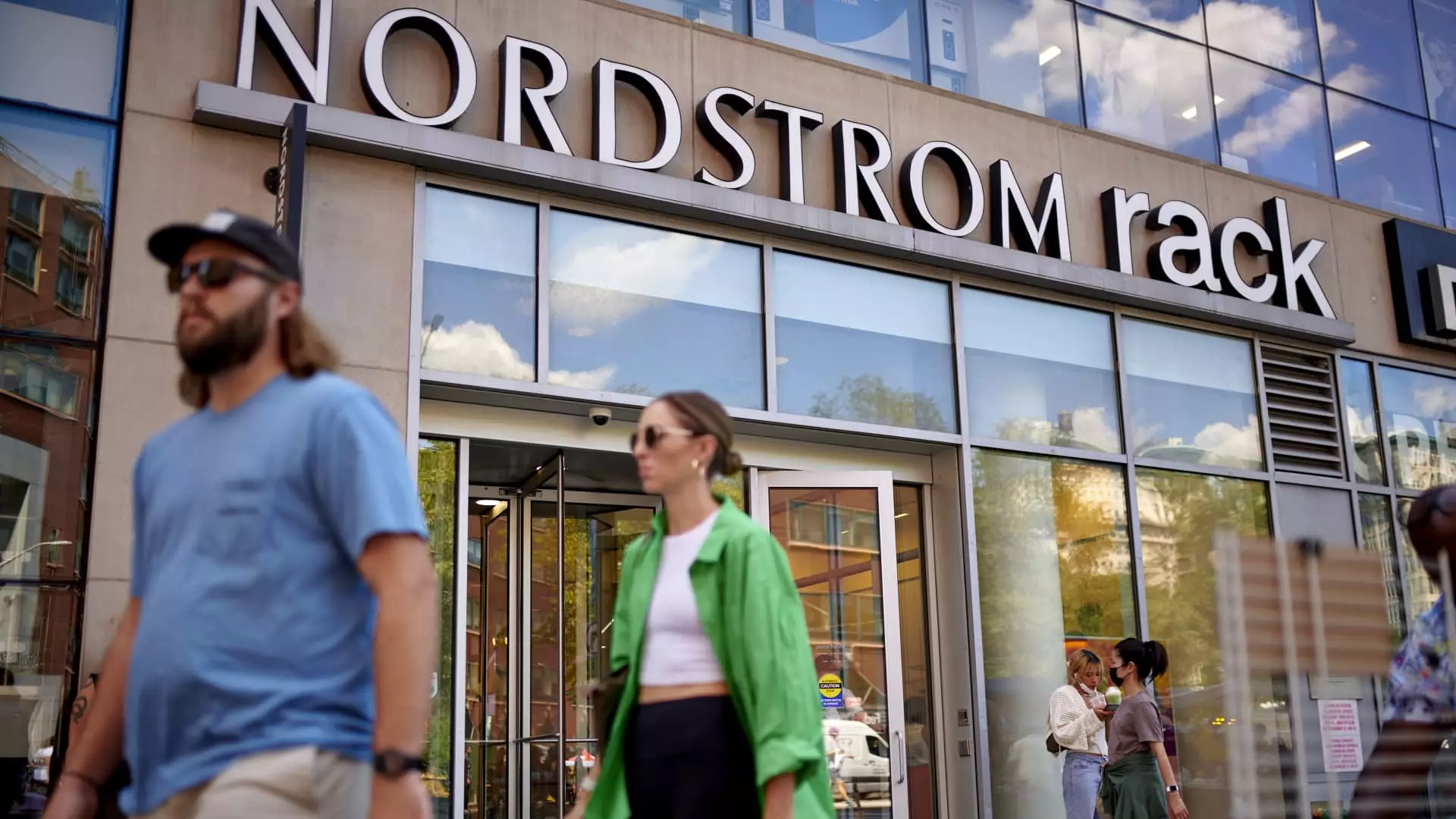On Tuesday, Nordstrom delivered an earnings report that surpassed Wall Street’s expectations, providing a glimmer of hope in a retail landscape muddied by economic challenges. The Seattle-based department store chain posted adjusted earnings per share (EPS) at 96 cents—25 cents higher than anticipated by analysts. While this news may celebrate a rebound in Nordstrom’s performance, it is essential to analyze the implications of their cautious outlook for the coming year, revealing a nuanced reality beneath the surface of optimism.
Despite the better-than-expected earnings, the guidance for the full fiscal year appears restrained. Nordstrom predicts adjusted EPS between $1.75 and $2.05, a slight improvement from previous estimates of $1.65 to $2.05. This tempered expectation reflects the company’s awareness of ongoing economic vulnerabilities, such as inflation and high interest rates, which continue to dampen consumer spending. For sales, the projection indicates a modest range of either a 1% decline or a 1% increase, highlighting the uncertainty that looms over retail prospects.
CEO Erik Nordstrom expressed optimism about the upcoming quarters, referencing solid second-quarter results and robust performance across both Nordstrom and Nordstrom Rack. However, while these comments provide a positive spin, they must be viewed in the context of a broader economic backdrop that leaves much to be desired while making consumers more cautious with their discretionary spending.
In the second financial quarter ending August 3, Nordstrom reported sales of $3.89 billion, marking a 3.4% increase from the previous year. Nevertheless, revenue fell just short of analysts’ expectations of $3.90 billion. The dissonance between growth in sales and unmet revenue expectations illustrates the complex dynamics retailers face today. Moreover, comparable sales rose by 1.9%, suggesting that while growth exists, it is tepid relative to industry standards. Observations indicate a 3.5% rise in gross merchandise value (GMV), yet this growth poses its own questions—was it driven by elevated prices or increased sales volume? This ambiguity reflects a broader industry struggle as retailers tread carefully amid fluctuating consumer behavior.
While profits saw a decline in comparison to the same quarter last year, they interestingly increased overall by approximately $150 million over the first six months of the fiscal year. The contrast between these figures underscores a significant turnaround from last year’s losses, yet suggests that challenges remain as Nordstrom continues to navigate a competitive retail environment.
Addressing operational hurdles has been of paramount importance for Nordstrom. Improvements in supply chain logistics have reportedly led to a noticeable reduction in delivery times by over 5% for online orders. Enhancements in merchandise distribution channels have contributed to a more efficient operation, leading to improved conversion rates and lower product return rates. Such changes are not merely superficial but are integral to sustain profitability amidst shifting consumer preferences and heightened competition.
Yet, it begs the question: is this turnaround sufficient for the department store to reclaim its status in a saturated market? Historically, retailers that have prioritized supply chain efficiencies often see positive impacts on both customer satisfaction and overall sales, making Nordstrom’s ongoing improvements a critical focus in a period of wary consumer sentiment.
A significant contributor to Nordstrom’s recent uplift in performance is the growth of its off-price division, Nordstrom Rack. During the latest quarter, sales surged by 8.8%, with comparable sales also witnessing a healthy 4.1% boost. Although the mainline Nordstrom banner only saw a modest sales increase of 0.9%, the strength of Nordstrom Rack highlights a growing trend in consumer behavior—shoppers are increasingly seeking out discounted options to offset their spending pressures.
To capitalize on this off-price boom, Nordstrom has been proactive in expanding Nordstrom Rack locations. With 11 new openings already this fiscal year and plans for more, this strategic shift is deemed essential for combating competition from established off-price retailers like TJX Cos., which owns TJ Maxx and Marshall’s. Through a focus on location expansion and hiring talent with off-price expertise, Nordstrom aims to secure a firmer foothold in this dynamic sector.
While Nordstrom’s earnings report illustrates a company making strides toward rectifying past challenges, the cautious guidance for the year ahead starkly contrasts with its successes. Retailers are at a crossroads, navigating through uncertain waters marked by variable consumer spending behaviors and external economic factors. Nordstrom’s balancing act between fostering growth and adequately preparing for potential hurdles will be pivotal in determining its long-term success. As the company continues to adapt to changing market conditions—particularly through its off-price segments—watching how it maneuvers in the coming months will be of paramount importance to both investors and consumers alike.

